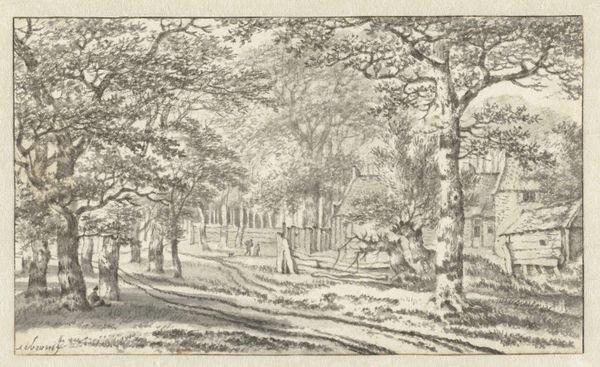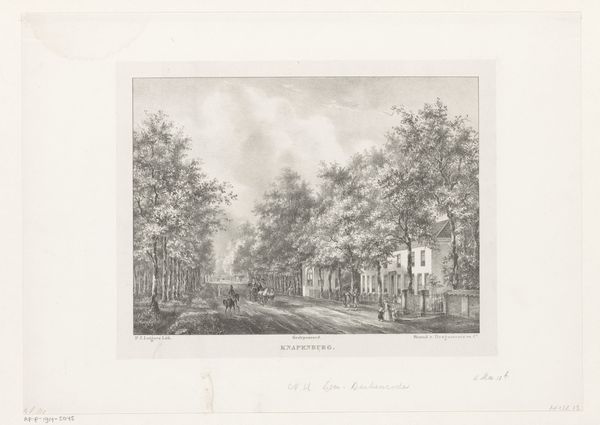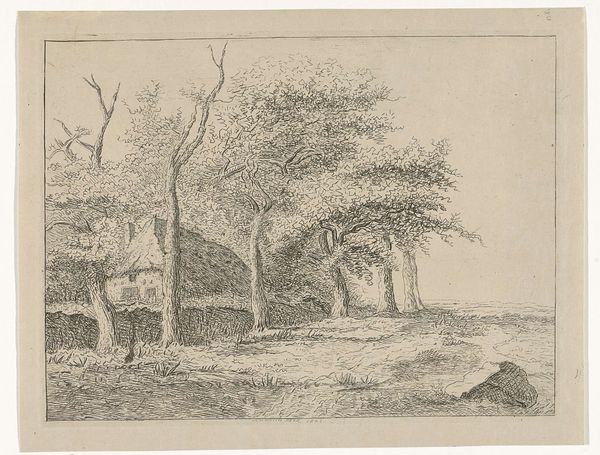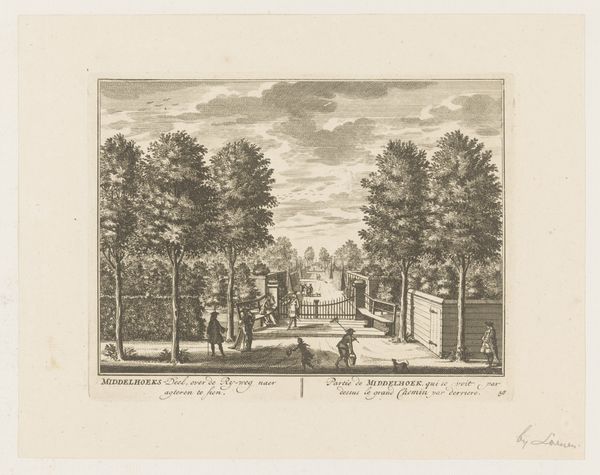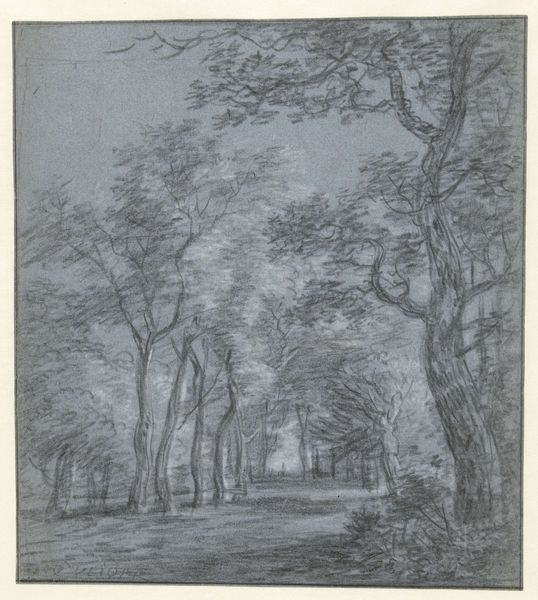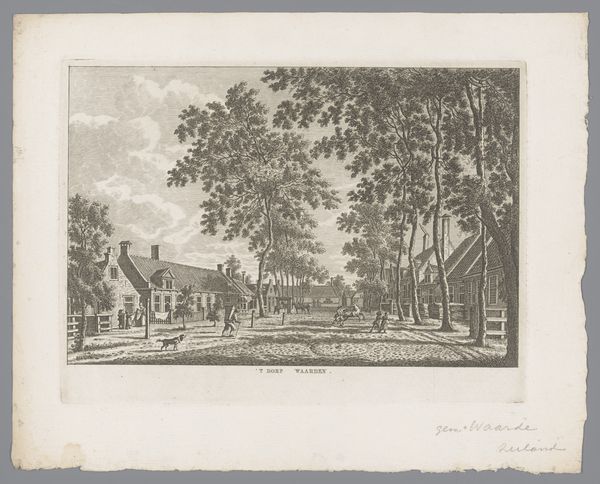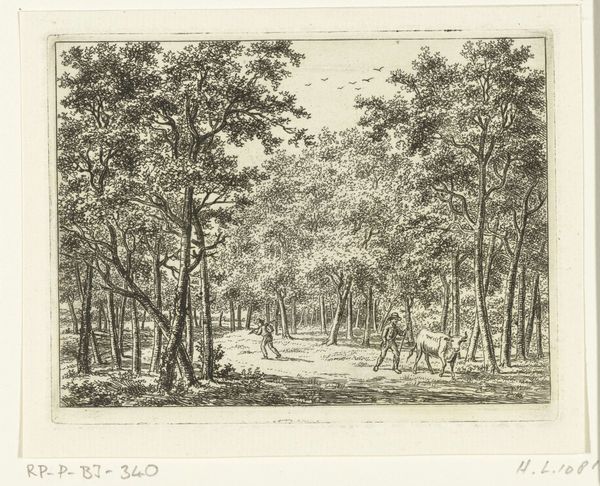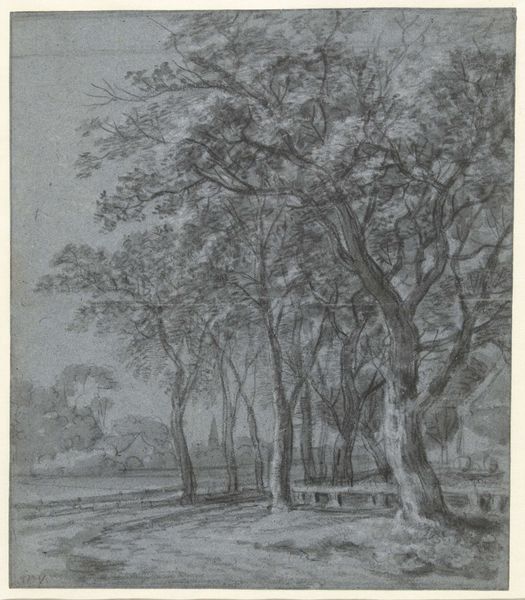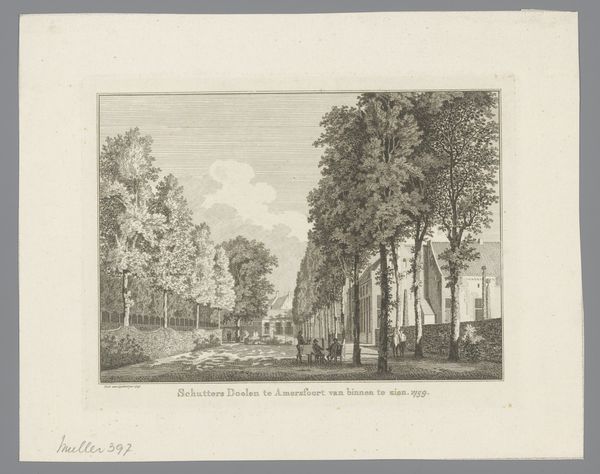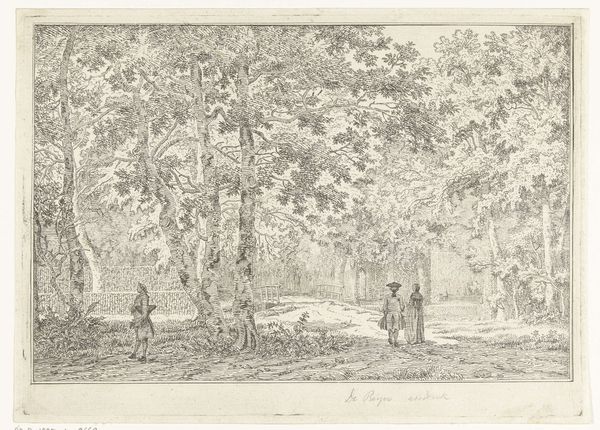
#
pencil drawn
#
amateur sketch
#
statue
#
toned paper
#
light pencil work
#
pencil sketch
#
incomplete sketchy
#
pen-ink sketch
#
pencil work
#
botanical art
#
watercolor
Dimensions: height 225 mm, width 320 mm
Copyright: Rijks Museum: Open Domain
Editor: This toned pencil sketch, titled *View in an Italian Garden (Villa Borghese?)*, was created by Jan Blom around 1652. I'm immediately struck by how the stark statue in the foreground contrasts with the soft, almost dreamlike quality of the trees in the background. What symbols or deeper meanings do you see embedded in this seemingly simple garden scene? Curator: The contrast you noted is very perceptive. The statue, rooted in classical ideals, represents order and permanence. Do you notice how it gazes down this almost tunnel-like perspective into the vanishing point? The trees, rendered with a looser, more ephemeral hand, symbolize the ever-changing, organic nature of life itself, drawing us in towards what the artist intended. The repetition of the trees creates an avenue, reminiscent of journeys, both literal and metaphorical. Perhaps Blom is considering how our understanding of timeless themes is viewed through different cultural filters. Editor: So the statue serves as a fixed point, almost a lens, through which we view the transient world? The interplay between artifice and nature seems really central. Curator: Precisely! And think about the tradition of gardens themselves. What does a garden mean culturally in 17th-century Europe? How do these arranged spaces relate to control versus freedom and growth, where cultivated ideas contrast natural wilderness? A garden is like a miniature stage, in which we perform this constant negotiation between chaos and order. Editor: That's fascinating. It shifts how I see the artist’s role – not just capturing a view, but really staging a meditation on the human relationship with nature. Curator: And aren’t gardens frequently places for introspection, or romantic or philosophical pursuits? The statue itself, though somewhat generic, reminds us that we’ve layered associations on classical ideals – so we must interpret based on contemporary symbolism in addition to timeless wisdom. This really allows us to reflect on history and cultural memory through what Blom chose to portray. Editor: This was great. Looking closely at the elements and the artist's intent really deepened my understanding of what could’ve been just another landscape. Curator: Agreed. These garden scenes invite viewers to pause, breathe, and consider those subtle yet impactful layers that inform our understanding.
Comments
No comments
Be the first to comment and join the conversation on the ultimate creative platform.
